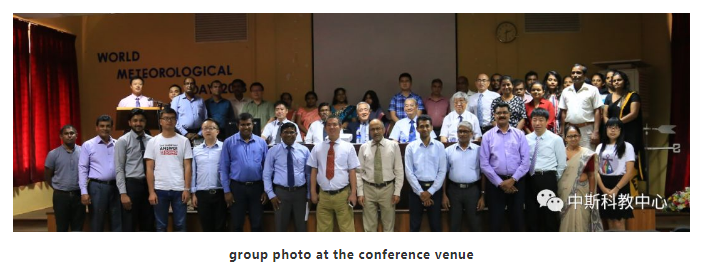第四届中国-斯里兰卡气候与海洋环境研讨会于8月9-10日在斯里兰卡气象局召开。来自中-斯两国的40多位科学家和技术官员参加了本次研讨会。现转载会议期间南亚英文媒体NewsIn.Asia(NewsIn.Asia is a South Asian website, operating from Colombo and accessed by readers worldwide)对中国科学院中国-斯里兰卡联合科教中心主任王东晓研究员的专访。


Study of Eastern Indian Ocean gathers momentum in Lanka with Chinese collaboration
Colombo, August 9 (newsin.asia): With climate change and disaster management grabbing world attention, the study of the Eastern Indian Ocean, in which Sri Lanka is located, has begun in right earnest, with China taking a deep interest in it.
Although the Eastern Indian Ocean has been studied since the 1950s, it is only now that research into it is gaining the kind of importance that it deserves in the matter of allocation of resources and deployment of scientific personnel.
While the Western nations, Japan and India had taken the lead in the study of the Eastern Indian Ocean, China has started taking a keen interest in deploying men and material to fathom the ocean.
This is not just to facilitate its Belt and Road Initiative (BRI), which is a but a string of ports girdling the globe, but also to understand weather patterns in China and East Asia, besides South Asia in which Sri Lanka is located.
After studying the South China Sea in depth because of its strategic interests there vis-à-vis Japan and the West, China is now paying attention to the Eastern Indian Ocean.
It has set up the China-Sri Lanka Joint Center for Research and Education at Ruhuna University in South Sri Lanka in collaboration with the South China Sea Institute of Oceanology which is a wing of the Chinese Academy of Sciences. A joint director of the Sri Lankan Center is Dr. Wang Dongxiao.
Speaking to newsin.asia on the sidelines of the Fourth China Sri Lanka Joint Workshop on Climate and Marine Environment here on Thursday, Dr.Wang said that weather patterns in China cannot be explained fully and adequately without going into the factors shaping weather patterns in the East Indian Ocean.
"It is not only China, but other countries in East Asia and South Asia will greatly benefit from studies conducted at the Center in Sri Lanka," Dr. Wang said.
Sri Lankan meteorologists have been studying weather patterns in Sri Lanka over a period of time and the impact of El Nino and La Nina on the island.
Climate is affected by fluctuations and anomalies in the complex water conveyor belts of ocean currents of the world. These fluctuations are known as "oscillations" and the two best-known oscillations are El Niño and La Niña.
Oscillations occur naturally in oceans all across the world; some have a limited impact on the regional weather and wider climate, and some have a much greater impact.
In countries that are dependent on certain weather conditions occurring regularly and on time (annual monsoons for example) erratic oscillations can cause problems leading to drought.
Knock on effects can lead to fish migrations and economic hardship for areas that rely on fish stocks.
Bay of Bengal
Dr. Wang said that the draining of fresh water into the Bay of Bengal (BoB) from rivers like the Ganges, creates conditions in the BoB which have a bearing on the stratification of sea water. Stratification of sea water, in turn, has a bearing on weather and climate. Static water could lead to a rise in water temperature which in turn could create storms.
A study of such phenomena in the Eastern Indian Ocean could help countries in the region predict storms and rainfall more accurately than before.
"Accurate predictions could help disaster management efforts by enabling preparedness on the part of the local authorities. In China, for instance, timely evacuations had led to minimization of loss of life," Dr. Wang said.
Speaking about Sri Lanka, he said that 25 Sri Lankan scientists are studying meteorology and oceanography in Chinese Universities with Chinese scholarships.
"There is a shortage of trained personnel and observational equipment in Sri Lanka, which needs to be addressed. China is helping Sri Lanka address these deficiencies," Dr. Wang said.
He further said that every April, China conducts scientific cruises and invited Sri Lankan scientists to join the cruises to conduct researches on subjects they are keen on.
(The featured image at the top shows Dr. Wang Dongxiao, Joint Director of China-Sri Lanka Joint Center for Research and Education at Ruhuna University in South Sri Lanka speaking at the workshop) Photo Credit: Tang Lu















 粤公网安备 44010502002384号
粤公网安备 44010502002384号